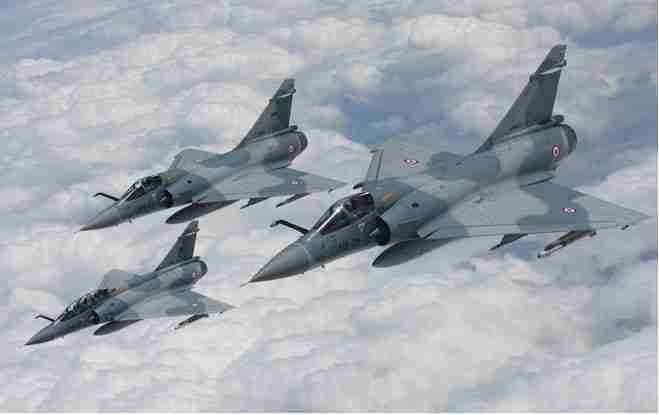Between 0340 h and 0353 h on 26 Feb 19, 12days after the Pulwama attack on a CRPF convoy by a Jaish-e- Mohammed ( JeM) terrorist in which 40 CRPF troopers were martyred, Mirage 2000 fighters of the IAF equipped with precision weapons destroyed the biggest training camp at Balakot, Khyber Pakhtunkhwa, Pakistan, killing, according to intelligence officials, many militants and terror recruits.
The attack was so precise that it hit only the desired terrorist camp and no civilian casualties have been reported. It is said that Mirage 2000 fighter jets dropped Spice 2000 precision bombs with “penetration warheads” during the raid.These bombs “pierced roofs” of the buildings targeted and exploded inside. So the damage was internal. And it was officially a non-military pre-emptive strike; non-military because its target was not military at all, but a base belonging to a non-state actor Pakistan has made an integral part of its strategy against India.
Initially, Pakistan responded terming the attacks a failure (but admitting that its airspace was breached), and later calling them an “act of aggression” and reserved its right to react. Next day a F-16 embedded strike package unsuccessfully tried bombing Indian military installations close to LOC; got engaged with IAF fighters and retracted as they were aware of presence of BVR equipped Su-30 MKI accompanying MiG21 Bison armed with R-73 missiles. In the process, MiG 21 Bison aircraft flown by Wg Cdr Abhinandan got hit and he ejected in POK. His story of valour is well known to the world by now. Pakistan is yet to accept the truth about F-16 which was shot down by Bison, as per officials of MEA.

Though there were many participants from IAF to make this surgical strike
Mirage 2000: The Mirage-2000 is undoubtedly one of the IAF’s most versatile and deadliest aircraft and it was first commissioned in 1985. It is also called Vajra, meaning
SPICE 2000: SPICE-2000 is not a bomb but is a ‘guidance kit’ that is attached to a standard warhead or bomb turning the bomb into a smart bomb with the ability to glide in the air and make minor adjustments to precisely hit its target. The SPICE guidance kit consists of two pieces – one is attached to the bomb’s head and the other is attached at the end. The first piece has a camera located at its tip with optical and IR sensors while the second piece is essentially a fin-kit allowing a bomb to glide.
Now, before a mission, an elaborate plan is prepared on ground with minute details available. Once the target is decided, air force personnel feed all kinds of data into a memory chip. The data includes GPS coordinates of the target, satellite images of the target, information about the land around the target and the angle at which the bomb should strike the target. The memory chip is inserted into the SPICE kit which is connected electronically to the mission computer of the aircraft. Fighter jets loaded with the SPICE- 2000 ‘smart bombs’ then take off for the mission.
Once the fighter jets reach a pre-determined location and height, they drop these smart bombs after ensuring the correct release envelope. The SPICE-2000’s onboard computer then takes over and uses the data stored in the memory chip to glide the bomb towards the target. The camera takes live images of what is in front of the bomb and using a “unique scene-matching algorithm”, these images are cross-referenced with the data stored on the memory chip.
So, essentially the SPICE-2000 kit increases the probability of a successful and accurate hit. So, did the Indian Air Force accurately hit buildings at Jaish’s largest terror camp? Chances are high. After all, the SPICE-2000 maker claims an accuracy rate of just three meters.
Wg Cdr Vikas Kalyani is a Senior Research Fellow at India Foundation. The views expressed are personal.


